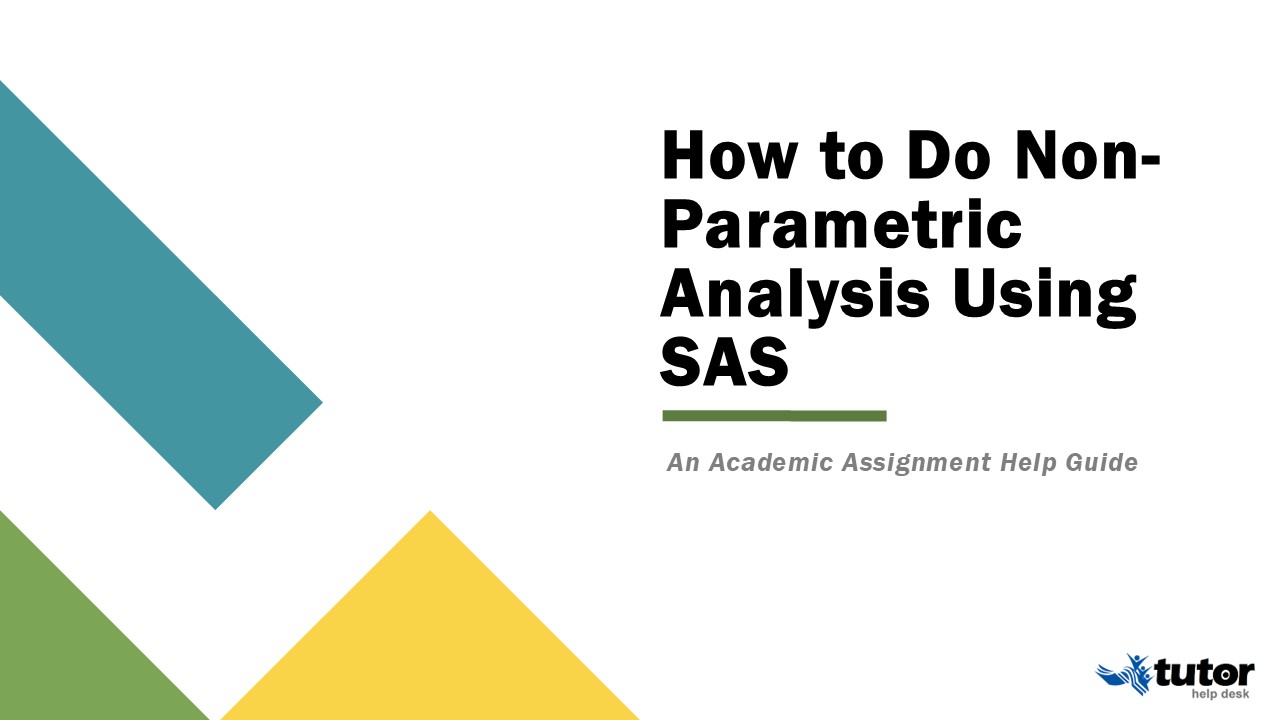How to Do Non-Parametric Analysis Using SAS - PowerPoint PPT Presentation
Title:
How to Do Non-Parametric Analysis Using SAS
Description:
The non-parametric analysis is a statistical hypothesis testing that does not require a normal distribution. And the statistical tool sas plays an important role in the analysis. Students looking for sas assignment help can seek support from Tutor Help Desk. – PowerPoint PPT presentation
Number of Views:1
Title: How to Do Non-Parametric Analysis Using SAS
1
How to Do Non-Parametric Analysis Using SAS
An Academic Assignment Help Guide
2
Introduction to Non-Parametric Analysis
- Non-parametric methods are statistical techniques
that do not assume a specific distribution for
the data. - These methods are useful when data doesn't meet
the assumptions of parametric tests (e.g., normal
distribution). - Examples include the Wilcoxon Rank-Sum Test,
Kruskal-Wallis Test, and Spearman's Rank
Correlation.
3
Why Use SAS for Non-Parametric Analysis?
- SAS is a powerful statistical software that
offers a wide range of non-parametric tests. - It provides flexibility and efficiency in
handling large datasets and performing complex
analyses. - SASs robust output and graphical capabilities
make interpretation easier.
4
Types of Non-Parametric Tests in SAS
- Wilcoxon Rank-Sum Test
- Kruskal-Wallis Test
- Sign Test
- Friedman Test
- Spearmans Rank Correlation
5
Step-by-Step Guide
6
Wilcoxon Rank-Sum Test
The Wilcoxon Rank-Sum Test is used to compare two
independent samples.
- SAS Codeproc npar1way datadataset_name
wilcoxon class group_variable var
test_variablerun
7
Kruskal-Wallis Test
The Kruskal-Wallis Test is an extension of the
Wilcoxon Rank-Sum Test for more than two groups.
- SAS Codeproc npar1way datadataset_name
wilcoxon dscf class group_variable var
test_variablerun
8
Sign Test
The Sign Test is used to test for the median of a
single sample or the differences between paired
samples.
- SAS Codeproc freq datadataset_name
tables test_variable / binomial where
conditionrun
9
Friedman Test
The Friedman Test is a non-parametric test for
detecting differences in treatments across
multiple test attempts.
- SAS Codeproc freq datadataset_name
tables test_variable exact binomialrun
10
Spearmans Rank Correlation Test
Spearmans Rank Correlation measures the strength
and direction of association between two ranked
variables.
- SAS Codeproc freq datadataset_name
tables test_variable exact binomialrun
11
Handling Ties in Non-Parametric Tests
- SAS handles ties by assigning average ranks to
tied values. - This can affect the interpretation of test
statistics, so its important to be aware of how
ties are treated.
12
Data Preparation for Non-Parametric Tests
- Proper data preparation is crucial for accurate
results in non-parametric tests. - This includes ensuring data is clean, handling
missing values, and coding categorical variables
appropriately.
13
Interpreting SAS Output for Non-Parametric Tests
- Understanding SAS output is key to interpreting
non-parametric test results. - Focus on key metrics such as p-values, test
statistics, and confidence intervals.
14
Customizing Output in SAS
SAS allows for customization of output to enhance
clarity and presentation.
- SAS Codeods select Plots Statisticsproc
npar1way datadataset_name wilcoxon class
group_variable var test_variablerun
15
Common Mistakes and Troubleshooting
- Common errors include incorrect data formatting,
misinterpretation of results, and overlooking
assumptions. - Always validate your results by checking SAS
output and reviewing assumptions.
16
Advantages and Disadvantages of Using SAS
- Advantages
- Robust statistical tools
- flexible data handling
- excellent graphical capabilities.
- Disadvantages
- Steep learning curve
- Cost
- complexity in customizing outputs.
17
Real-World Applications of Non-Parametric Analysis
- Non-parametric analysis in SAS is widely used in
fields such as medicine, finance, and social
sciences. - Examples include analyzing clinical trial data,
assessing financial market trends, and social
survey analysis.
18
Challenges in Conducting Non-Parametric Analysis
in SAS
- Challenges include complexity in data
preparation, understanding SAS syntax, and
interpreting outputs. - These challenges can be mitigated with proper
guidance and support.
19
Expert SAS Assignment Help
20
Expert SAS Assignment Help
- Our sas assignment help service provides expert
guidance to help students overcome challenges in
SAS. - We assist with coding, data preparation,
interpretation of results, and more to ensure
academic success. - We prepare university standard reports with
accurate visualizations, outputs and sas codes.
21
Thank you
- TUTOR HELP DESK
- 1-617-807-0926
- hw_at_tutorhelpdesk.com
- www.tutorhelpdesk.com































